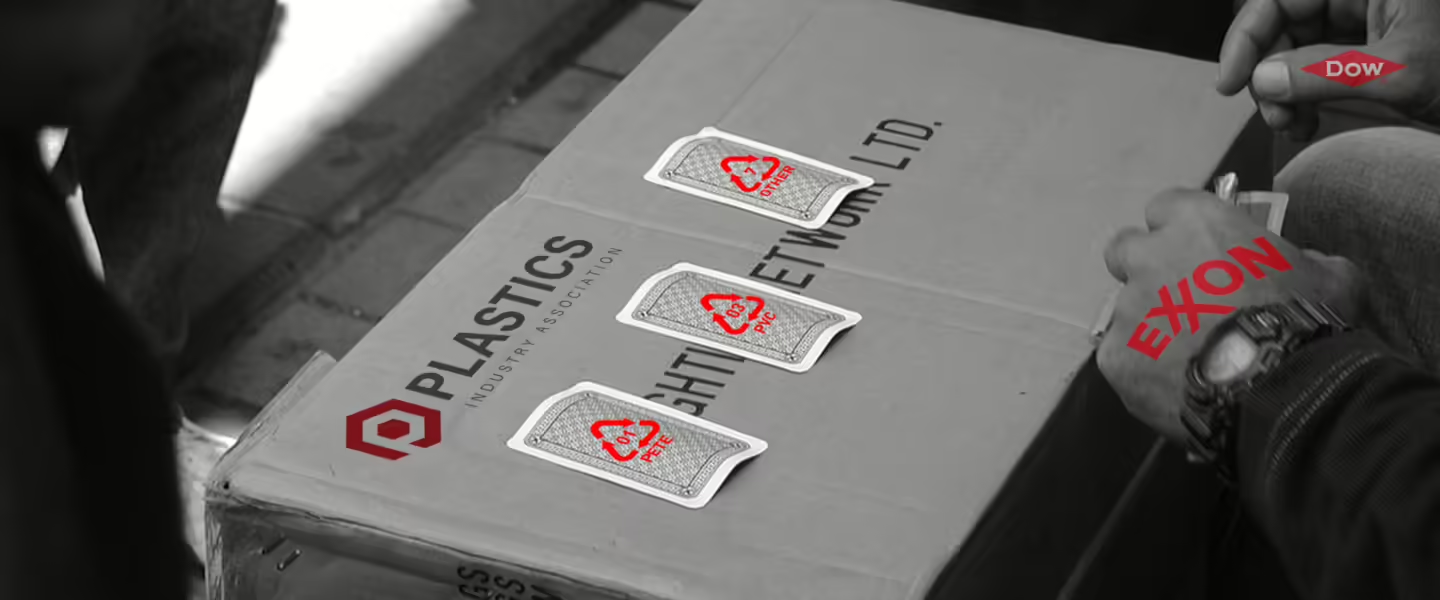Welcome to Saturday Hashtag, a weekly place for broader context.
|
Listen To This Story
|
In 1907, chemist Leo Baekeland coined the term plastic when he invented the first fully synthetic material on Earth called Bakelite.
Prior to plastic, industries sourced structurally pliant materials like horn, tortoiseshell, amber, rubber, shellac, etc. from nature. The need for synthetic alternatives for these materials exploded with industrialization, which greatly enhanced living standards and the rate of innovation.
Improved living standards lowered the death rate which, in turn, dramatically accelerated population growth (to 2 billion in 1927). At this point, environmental costs associated with the increased demands for the natural materials began to move from simply economic to the existential.
The plastic-industry perfidy begins.
Commercial plastic recycling didn’t happen in America until 1972, well after the throwaway culture inspired by the plastic explosion was in full swing, with the world’s first plastic recycling mill.
This was the first of the 1,059 such props currently operating in the US and used by the plastic industry to deceive the public and expand production.
In 1988 the US Society of the Plastics Industry, which was founded in 1937, took a page from organized crime and created a front organization called the Council for Solid Waste Solutions. Its goal was to promote the fraudulent idea of plastic recycling to the public.
Recycling has not only failed to live up to industry promises, it is making the situation worse, and the new mass-balance scam is no better.
Plastic producers knew these materials were problematic as early as 1940. The industry understood that plastic recycling was not a viable solution at least as early as 1963, but they continued to hide this reality from the public and initiate advantageous legislation for decades. The fact is that less than 10 percent of all the plastic produced on Earth has been recycled.
Petrochemical producers, such as ExxonMobil Chemical and Shell Polymers, and disposable plastic goods producers, like Coca-Cola, PepsiCo ,and Unilever, need to be accountable for the damage they perpetrate and profit from. If not for the $249 billion US health care costs, the disease escalation, and the food chain destruction that their industry facilitated, because Plastic Overshoot Day — the point when plastic becomes unmanageable — is looming.
The Environmental Crimes Section enforces federal environmental statutes and the Environmental Protection Agency is tasked with prosecutions, but both these operations have been in decline for years.
Interpol reports show that plastic industry criminality is not just a US problem. There was a UN Resolution on plastic, the World Economic Forum released a plastic ecosystem outline, and the White House released a mobilization plan — but there is no real central plastic strategy.
To this point civil litigation has been the more successful route for accountability. In 2023, over $11 billion was paid by chemical companies. As of April 16, 2024, the attorneys general of 27 states have filed legal action, including Maine, Louisiana, New Jersey, California, Texas, Michigan. Other municipalities and institutions have also filed suit: Los Angeles; Baltimore; Philadelphia; Stuart,FL; Greensboro, NC; Spokane, WA; Eau Claire, WI; Orange County, CA; Bergen County, NJ; the EPA; the Environmental Integrity Project; West Virginia State University; etc.
There’s a recent finding that might hold the plastic industry to account for the recycling three-card monte scam they’ve played for the last 80 years: According to the Center for International Environmental Law plastics companies have violated countless US laws.
When Is ‘Recyclable’ Not Really Recyclable? When the Plastics Industry Gets to Define What the Word Means.
From ProPublica: “Companies whose futures depend on plastic production are trying to persuade the federal government to allow them to put the label ‘recyclable’ on plastic shopping bags and other items virtually guaranteed to end up in landfills and incinerators.”
There’s an Explosion of Plastic Waste. Big Companies Say ‘We’ve Got This.’
The author writes, “Big brands like Procter & Gamble and Nestlé say a new generation of plants will help them meet environmental goals, but the technology is struggling to deliver.”
Plastic Recycling: A Panacea or Environmental Pollution Problem
From Nature: “While recycling has been touted as one solution to counter plastic waste and resource utilization, it has been largely ineffective in offsetting the impact of rising global plastic production of more than 400 million metric tonnes annually, due to low global recycling rates of only 9%.”
The Beginning of the End for Plastics Pollution?
From the United Nations Development Programme: “This is a monumental year for multilateralism to prevail in the fight against plastic pollution, as the United Nations has committed to deliver a legally binding agreement by the end of 2024. The agreement is expected to catalyze global action to transform the way we produce and dispose of plastics. Three rounds of negotiations have laid the groundwork, and two more meetings of the inter-governmental committee of negotiation will convene in Canada and South Korea in April and November. Here are four key issues to watch for in 2024.”
Plastic Is What’s Forming Our Future, and It’s Killing Us
The author writes, “Some of you may be thinking that plastic is convenient to use, but is it convenient to kill the planet? As time passes, more and more plastic is being thrown into landfills, burned and thrown into the ocean. Plastic is what’s forming our future.”
Reduce, Reuse, Redirect Outrage: How Plastic Makers Used Recycling as a Fig Leaf
The author writes, “The plastics industry has worked for decades to convince people and policymakers that recycling would keep waste out of landfills and the environment. Consumers sort their trash so plastic packaging can be repurposed, and local governments use taxpayer money to gather and process the material. Yet from the early days of recycling, plastic makers, including oil and gas companies, knew that it wasn’t a viable solution to deal with increasing amounts of waste, according to documents uncovered by the Center for Climate Integrity.”
A New Report Says the Promises of the Plastic Recycling Industry Don’t Pan out for Communities
From The Allegheny Front: “The world is drowning in plastic pollution. But in the U.S., only a small percentage of plastic, just 5 or 6 percent, is recycled. Much of that is done through mechanical recycling, where post-consumer plastic waste is collected and shredded, or ground down to make new products. Enter chemical recycling, or what the industry calls advanced recycling. There are different methods, like pyrolysis and gasification, but basically, high heat or chemicals break down plastic to the molecular level so it can be made into more plastic or other materials.”
The Case Against Plastic Waste Grows as More Studies Point to Potential Harm
From North Carolina Health News: “What type of pollution is so tiny it can be invisible to the naked eye? Hint: Humans ingest it through the air we breathe, the food we eat and the water we drink. The answer: microplastics. Microplastics are produced from the breakdown of the millions of tons of plastics — much of it single-use plastic — that clog landfills, choke up waterways and float in the air we breathe.”
‘Worm Gut’ Bacteria Might Help Speed Up Plastic Degradation
The author writes, “Researchers in Singapore have developed a new method to accelerate plastic biodegradation by creating an artificial ‘worm gut’ that can break down plastic. This might be a significant breakthrough in combating global plastic pollution by natural means.”




